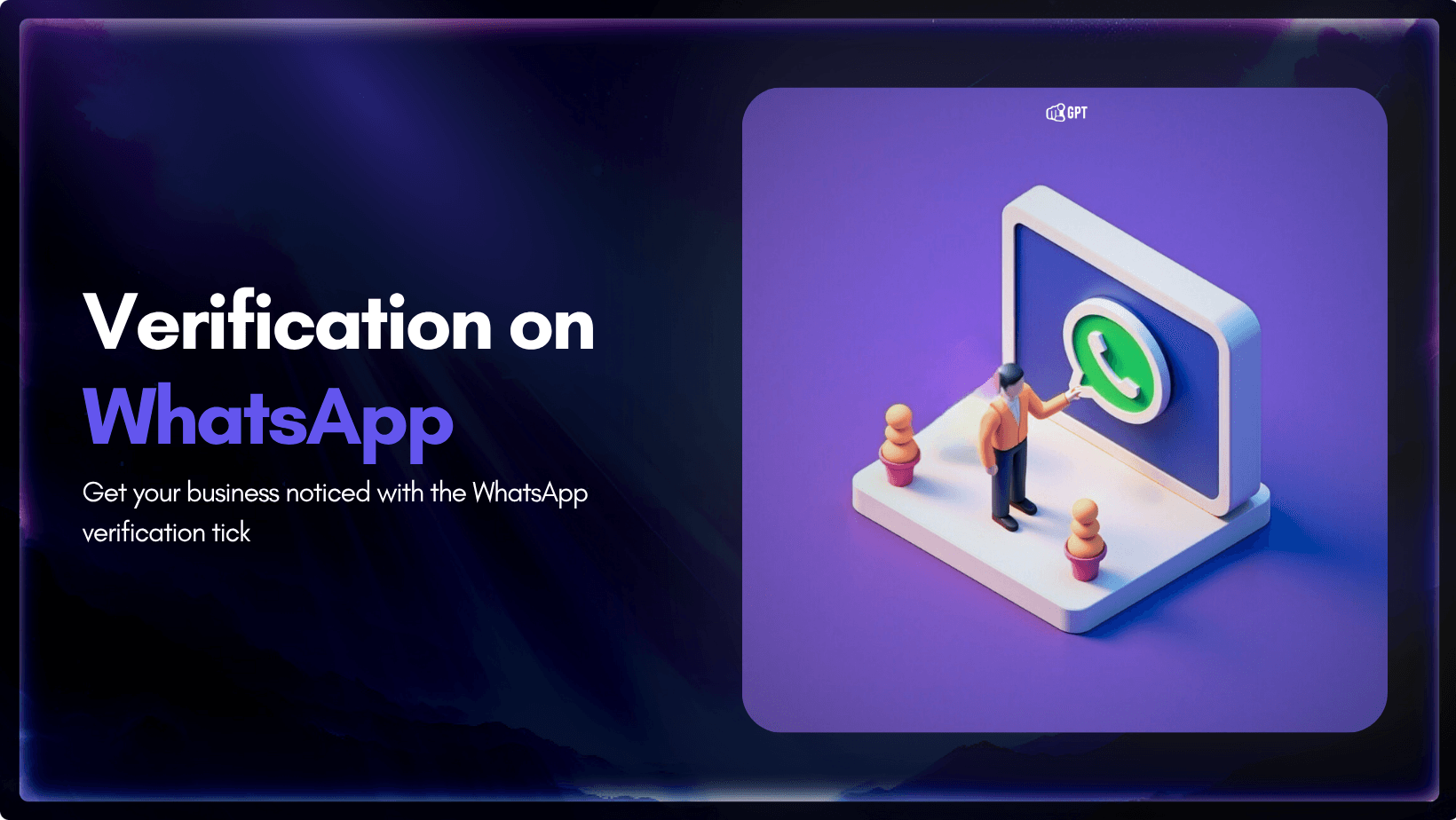What Is an AI Lead Generation Chatbot? Complete Guide to Benefits, Real Examples & ROI
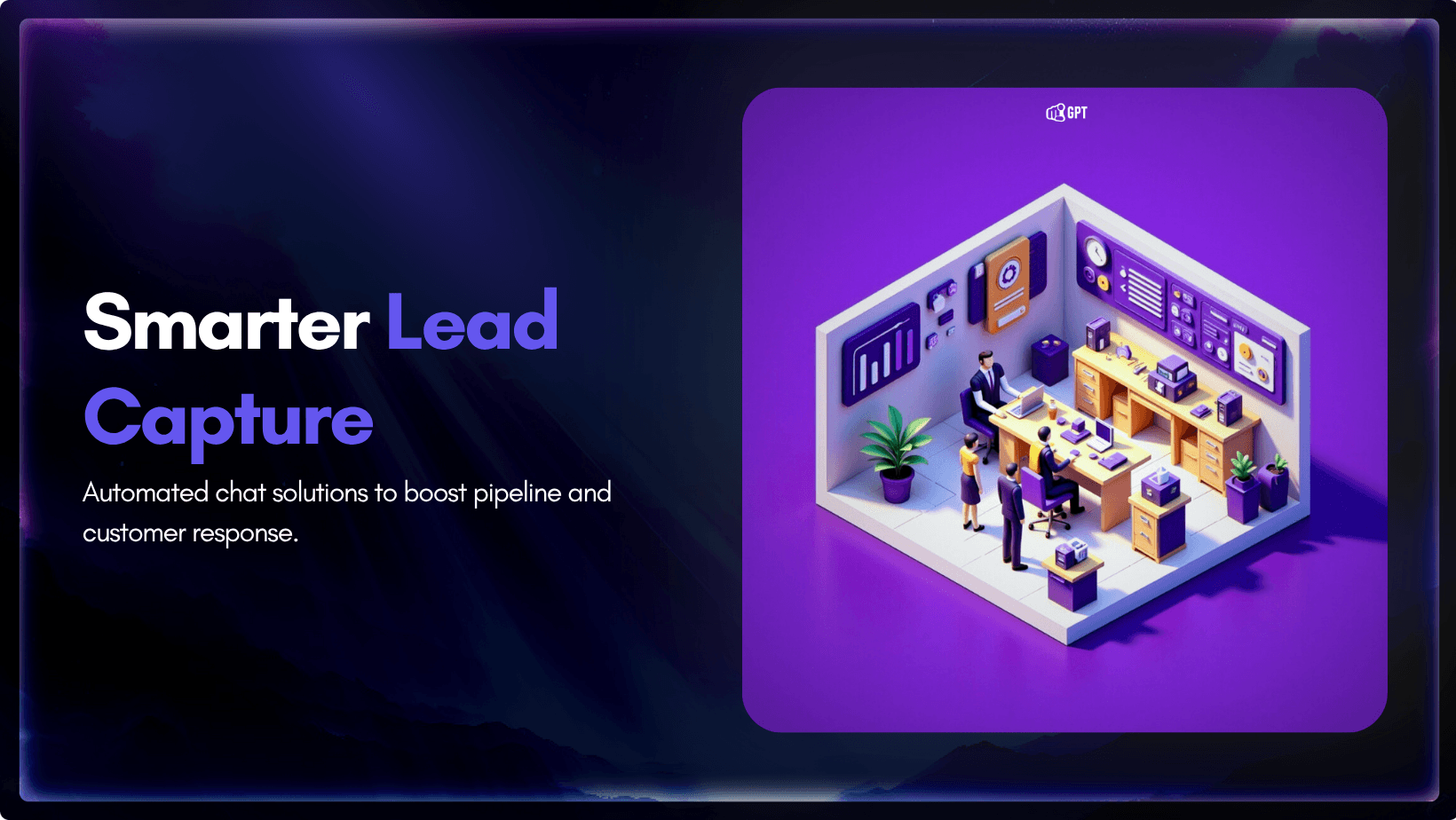
Every business depends on one thing to grow: a steady pipeline of qualified leads. But the old methods such as static forms, cold outreach, and delayed follow-ups are breaking down. Customers now expect instant answers, personalized support, and a frictionless way to move forward.
Lead generation chatbots change this dynamic. They meet visitors the moment they arrive, start real conversations, and capture the data your sales team needs. Acting as conversational marketing tools, they ask smart qualifying questions and move prospects forward without the delays of manual outreach.
When connected with your CRM system, every captured lead flows directly into your pipeline for faster follow-ups and a consistent customer experience.
In this blog, you’ll learn what lead generation chatbots are, how they work, the benefits they deliver, real-world use cases, and practical steps to build one for your business.
What is a Lead Generation Chatbot?
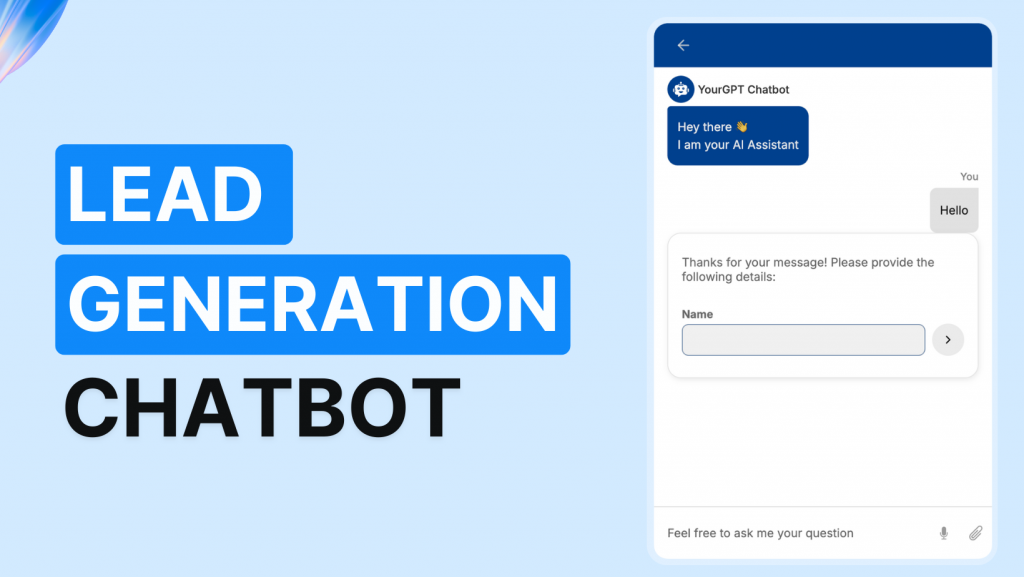
A lead generation chatbot is an AI-powered assistant that instantly talks to visitors on your website, app, or social channels. It replaces long forms and delayed follow-ups by asking questions in real time, capturing lead details, and guiding users toward the next step.
Lead generation chatbots function as your always-available sales representative, engaging prospects 24/7 without requiring human intervention for initial qualification. They capture visitor information through natural conversation rather than forcing users through traditional form-filling experiences that often result in abandonment.
The technology combines natural language processing, conversational AI, and sales qualification frameworks to create experiences that feel personal whilst operating at scale. When visitors arrive on your website, the chatbot assesses their behaviour, initiates contextually relevant conversations, and collects the specific information your sales team needs to prioritise follow-up effectively.
Core Functions of Lead Generation Chatbots
When you know how lead generation chatbots work, you can see why they work better than traditional ways of getting leads in all types of businesses and industries.
1. Intelligent Visitor Engagement: The bot does not greet with a generic hello. It uses behavioural triggers such as time on page and scroll depth and exit intent and referral source. A visitor from a pricing comparison post gets a different greeting than someone on a case study page. Learn about unified channels with our guide on omnichannel chatbot.
2. Strategic Qualification Through Conversation: Rather than bombarding visitors with a 10-field form, the chatbot uses conversational intelligence to gather information progressively. It asks qualifying questions based on proven frameworks:
- BANT (Budget, Authority, Need, Timeline): Traditional enterprise sales model focusing on purchasing power and decision-making capability
- CHAMP (Challenges, Authority, Money, Prioritization): Modern approach that leads with pain points before discussing budget
- MEDDIC (Metrics, Economic Buyer, Decision Criteria, Decision Process, Identify Pain, Champion): Complex sales methodology for high-value B2B deals
- GPCTBA/C&I (Goals, Plans, Challenges, Timeline, Budget, Authority / Consequences & Implications): Consultative approach for solution-based selling
3. Smart Data Capture and Enrichment: Beyond collecting basic contact information, advanced chatbots can:
- Enrich data with firmographic information (company size, industry, revenue)
- Detect intent signals based on conversation patterns
- Score leads in real-time using predictive models
4. Quick System Integration Modern lead gen chatbots don’t work in isolation. They connect with:
- CRM platforms (Salesforce, HubSpot, Pipedrive, Zoho)
- Customer Data Platforms (Segment, mParticle, Treasure Data)
- Marketing automation (Marketo, Pardot, ActiveCampaign)
- Sales engagement tools (Outreach, SalesLoft, Apollo)
5. Intelligent Lead Routing and Follow-Up: The chatbot doesn’t just capture leads; it orchestrates the handoff. Based on lead score, territory, product interest, or account tier, it can:
- Route high-value prospects to senior account executives immediately
- Schedule meetings directly on sales rep calendars
- Send automated nurture sequences for mid-funnel leads
- Trigger Slack notifications for hot leads requiring instant attention
- Assign leads to SDR teams using round-robin or skills-based routing
It works because it removes friction. Instead of asking visitors to provide information without context, the chatbot builds trust through conversation and ensures smoother movement through the funnel.
How Chatbots Align With Your Sales Funnel
Lead generation chatbots function effectively because they meet prospects at every funnel stage with appropriate messaging and actions that advance relationships naturally.
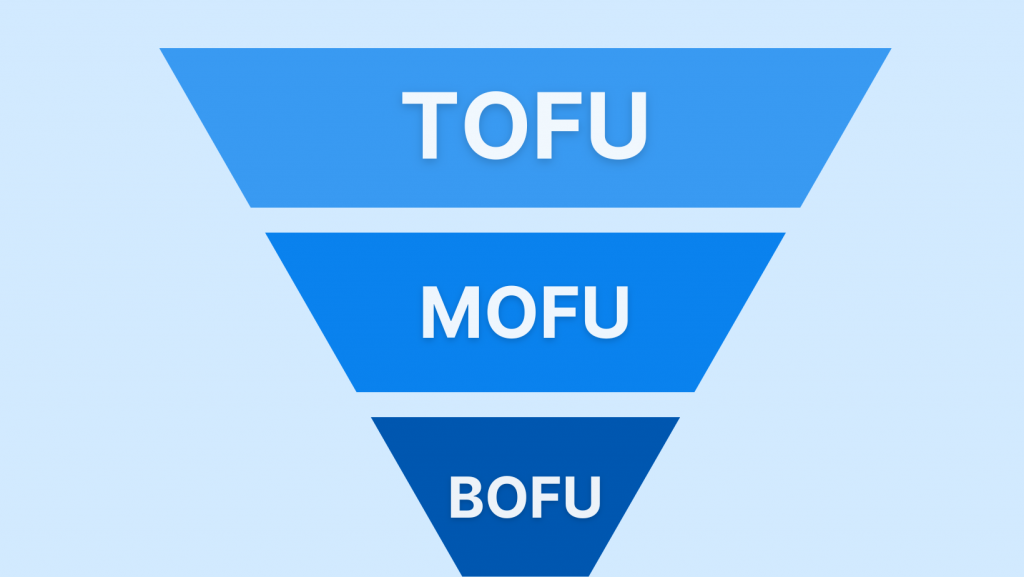
1. Top of Funnel: Awareness Stage
Visitors in the awareness stage are exploring problems, researching potential solutions, and educating themselves before considering specific vendors. The chatbot supports discovery by answering questions, recommending relevant content, and capturing contact information for continued engagement.
Rather than pushing for immediate sales conversations, the chatbot positions your brand as a helpful resource whilst gathering initial data about visitor challenges and interests for future personalisation.
2. Middle of Funnel: Consideration Stage
Prospects evaluating specific solutions compare features, pricing, and vendor capabilities. The chatbot accelerates evaluation by providing detailed product information, offering comparison resources, scheduling demos, and connecting prospects with sales representatives when requested.
This stage requires balancing information provision with qualification, ensuring sales teams receive properly qualified leads rather than every visitor who asks a question.
3. Bottom of Funnel: Decision Stage
Ready-to-buy prospects need final details, pricing clarity, and smooth purchase processes. The chatbot removes friction by answering specific objections, clarifying terms, connecting prospects with decision-makers immediately, and facilitating transaction completion.
At this stage, speed determines outcomes. The chatbot’s instant availability prevents prospects from seeking alternatives whilst they wait for human responses.
4. Post-Purchase: Retention and Expansion
Lead generation doesn’t end at purchase. The chatbot supports expansion by engaging existing customers with upgrade opportunities, cross-sell recommendations, and feedback collection that identifies expansion possibilities.
This comprehensive funnel alignment ensures the chatbot generates value throughout customer lifecycles rather than only at initial acquisition.
How to Build a Lead Generation Chatbot with YourGPT
Building an effective chatbot with YourGPT follows a streamlined process that gets your lead generation system operational quickly whilst maintaining flexibility for advanced customisation.
Step 1: Create Your Account
Sign up or log in to YourGPT to access the complete platform. From the dashboard, you can build AI agents, manage conversations, track performance, and connect external systems. The interface is designed for simplicity, allowing you to start building without any technical background or coding skills.
Step 2: Create Your First AI Agent
Select Create New AI Agent without coding from your dashboard. This AI agent will act as your lead generation chatbot — engaging website visitors and capturing qualified prospects automatically. Give your agent a clear and descriptive name so it’s easy to identify when managing multiple bots for different use cases.
Step 3: Customise Your AI Agent
Personalise your chatbot’s behaviour, appearance, and intelligence through three key settings:
- Bot Persona: Define how your chatbot communicates. Set the tone (professional, friendly, consultative), style, and response pattern that reflect your brand voice.
- Model Selection: Choose the AI model best suited for your use case. Different models vary in response quality, understanding, and processing capability.
- Appearance: Customise colour, placement, welcome message, and button style to match your website design.
These adjustments ensure your chatbot feels like an integrated part of your brand rather than a generic tool.
Step 4: Enable Lead Generation Form
Go to the general settings within your AI agent configuration. Locate and enable the Lead Generation form feature to activate quick lead capture functionality.
This setting ensures your chatbot collects essential contact information during conversations, automatically storing qualified leads for sales team follow-up. Configure which fields the chatbot requests based on your minimum qualification requirements, typically including name, email address, company name, and specific qualifying criteria.
The quick capture approach provides immediate lead generation capability without complex configuration, perfect for businesses wanting to start capturing leads rapidly.
Step 5: Advanced Lead Generation with AI Studio
For businesses needing advanced workflows, access AI Studio for deeper control. AI Studio lets you:
- Design AI agents that adapt to each prospect.
- Sync with CRMs like Salesforce, HubSpot, Pipedrive, or Zoho for real-time data transfer.
- Map captured data accurately to CRM fields, including custom fields and scoring models.
- Automate lead routing by territory, qualification, or product interest.
- Integrate with tools via Zapier, Pabbly, or direct APIs to connect chatbot data across your tech stack.
AI Studio gives you enterprise-grade flexibility without losing the simplicity of YourGPT’s core platform.
Step 6: Test Your Chatbot
Before going live, test the chatbot thoroughly. Simulate real visitor conversations to check accuracy, form submissions, and data capture. Ensure captured details appear correctly in your CRM.
Step 7: Launch and Monitor
Once testing is complete, deploy your AI agent on key pages where visitor engagement is most valuable. Common placements include pricing pages, product or feature pages, and dedicated landing pages.
Copy the installation code from YourGPT and add it to your website, or use the available integrations for platforms such as WordPress, Shopify, Webflow, and Wix.
Your AI agent will go live instantly and start engaging visitors, capturing leads, and supporting sales conversations automatically.
Refine regularly based on performance data. Small improvements in conversion rates or lead quality compound significantly over time as traffic volumes increase and more prospects engage with your optimised chatbot.
Critical Metrics for Measuring Success
Tracking the right metrics shows whether your chatbot investment is creating measurable business results. These metrics help you identify what works, what needs improvement, and how to increase your return on investment.
1. Conversation Start Rate
This shows the percentage of website visitors who start a chat with your bot.
It reflects how well the chatbot captures attention and communicates its purpose.
A low start rate often signals poor placement, unclear value proposition, or targeting on the wrong pages. Typical rates range from 5% to 20%, depending on page type, traffic source, and chatbot visibility.
2. Conversation Completion Rate
This measures the percentage of chats that reach the final message.
It reveals how effectively your chatbot maintains engagement across conversation flows.
A high abandonment rate suggests that the chat feels too long, confusing, or offers little value for the user’s time. Aim for a completion rate above 60%. Anything below 40% needs immediate review.
3. Lead Conversion Rate
This indicates how well the chatbot converts engaged visitors into qualified leads. It directly connects chatbot performance to business outcomes and ROI.
Strong implementations achieve 15%–40% lead conversion rates from completed chats, depending on visitor intent and qualification strictness.
4. Lead Quality Score
This compares the average quality of chatbot-generated leads with those from other channels. It answers whether your chatbot attracts genuine buyers or just casual browsers.
A low score points to ineffective qualification questions or poor targeting.
Monitor how chatbot leads perform through the sales funnel — quality leads should close at equal or higher rates than others.
5. Sales Velocity Impact
This metric tracks how fast chatbot leads move from capture to deal closure.
Faster velocity means better qualification and higher readiness to buy.
Compare cycle time per funnel stage for chatbot leads versus traditional sources to find performance gaps or advantages.
6. Response Time to Leads
Time to first contact matters.
Even if your chatbot captures leads instantly, delays in sales follow-up can cost conversions.
Target a response within five minutes for hot leads and under two hours for qualified leads. Quicker engagement consistently drives better outcomes.
7. Return on Investment (ROI)
ROI evaluates whether chatbot-driven revenue justifies total costs — platform fees, implementation, and ongoing optimisation.
Calculate ROI across the full sales cycle. Include both direct chatbot-sourced revenue and influenced revenue from chatbot touchpoints in multi-touch journeys.
8. Attribution Impact
Not every chatbot interaction leads directly to a sale. This metric highlights the chatbot’s role across the customer journey, especially mid-funnel engagements.
Analyse first-touch, last-touch, and multi-touch attribution to understand the chatbot’s real contribution to conversions and customer movement through the funnel.
The Evolution of Lead Generation Chatbots
1. Contextual Understanding Through AI Models
Modern chatbots powered by large language models can interpret user intent, sentiment, and conversation flow with near-human accuracy. They sense frustration, identify urgency, and adjust tone in real time, creating natural and genuinely helpful interactions rather than scripted exchanges.
2. Predictive Lead Scoring Integration
AI-driven systems analyse chat data, user behaviour, and business information to predict lead quality and conversion potential. These insights help sales teams prioritise high-value prospects and automate routing based on conversion probability, improving both efficiency and sales outcomes.
3. Proactive Engagement Using Intent Signals
Today’s chatbots no longer wait for users to initiate a chat. They engage proactively when user behaviour indicates strong purchase intent, or exit intent. This timely intervention captures opportunities that passive chatbots often miss while keeping the conversation relevant and non-intrusive.
4. Multimodal Interaction Capabilities
AI chatbots are moving beyond text to include voice and visual communication. Voice interactions allow hands-free engagement, while visual inputs help identify products or resolve issues faster. These multimodal capabilities improve accessibility and adapt to how users prefer to communicate.
5. Hyper-Personalisation Through Data Integration
Integrating chatbots with CRM and marketing platforms enables personalised experiences for every visitor. The chatbot tailors messages using past interactions, behavioural data, and known preferences, ensuring relevance and contextual accuracy instead of generic responses.
6. Autonomous Learning and Continuous Improvement
AI models learn from past conversations to optimise responses, improve accuracy, and refine workflows automatically. This reduces the need for manual updates while steadily improving performance, leading to higher conversion rates over time.
7. Smooth Human Handoff
Intelligent chatbots recognise when a query needs human attention and transfer it seamlessly to live agents along with chat history and context. This ensures that users do not have to repeat information and that the conversation continues naturally, balancing automation with human expertise.
Frequently Asked Questions
What is a lead generation chatbot? ▼
A lead generation chatbot is an AI-powered tool that engages website visitors through automated conversations, qualifies prospects by asking relevant questions, and captures contact information. Unlike traditional forms, it creates interactive experiences that guide visitors through the qualification process whilst collecting data like name, email, budget, and business needs in real time.
How do lead generation chatbots increase conversion rates? ▼
Lead generation chatbots increase conversions by providing instant responses without wait times, reducing form abandonment through conversational data collection, engaging visitors during high-intent moments, and personalising conversations based on user behaviour. Research shows chatbots can improve lead capture rates by 2-3x compared to static forms because they maintain engagement and address objections in real time.
What is the difference between a lead generation chatbot and live chat? ▼
Live chat requires human agents to respond during business hours, creating wait times and limiting availability. Lead generation chatbots operate 24/7 using AI to automatically qualify leads, answer common questions, and route high-value prospects to sales teams. Chatbots handle unlimited conversations simultaneously and use predefined qualification criteria to prioritise leads, whilst live chat depends on agent availability and manual assessment.
How does a chatbot qualify leads automatically? ▼
Chatbots qualify leads through rule-based logic and lead scoring models that evaluate responses against predefined criteria. They ask qualification questions about budget, timeline, decision-making authority, company size, and specific needs. Based on the answers, the chatbot assigns scores and categorises leads as hot, warm, or cold. High-scoring leads get routed immediately to sales teams, whilst lower-priority contacts enter nurture sequences.
Can chatbots integrate with CRM and marketing tools? ▼
Yes. Modern chatbot platforms integrate directly with CRMs like Salesforce, HubSpot, and Pipedrive, as well as marketing automation tools, email platforms, and workflow automation services like Zapier and Make. These integrations enable automatic lead data transfer, trigger follow-up sequences, update contact records, and sync conversation history without manual data entry. This ensures leads move seamlessly into your existing sales pipeline.
Which industries benefit most from lead generation chatbots? ▼
Lead generation chatbots deliver strong results across B2B SaaS companies handling complex sales cycles, e-commerce businesses qualifying purchase intent, educational institutions processing enrolment enquiries, healthcare providers managing appointment bookings, real estate agencies qualifying property buyers, and professional services firms capturing consultation requests. Any business with extended consideration periods or qualification requirements benefits from automated lead capture and nurturing.
How much does a lead generation chatbot cost? ▼
Lead generation chatbot pricing varies based on features, conversation volume, and integrations. Basic plans typically start around $20-50 per month for small businesses with limited conversations. Mid-tier solutions range from $100-300 monthly for growing companies needing CRM integration and advanced qualification logic. Enterprise platforms with custom workflows, unlimited conversations, and dedicated support can cost $500-2000+ monthly. Most platforms offer free trials to test functionality before commitment.
Are chatbot-collected leads GDPR compliant? ▼
Reputable chatbot platforms provide GDPR-compliant features including explicit consent collection before data capture, clear privacy policy disclosures during conversations, encrypted data transmission and storage, user rights to access and delete their data, and data processing agreements for business users. However, compliance depends on proper implementation. You must configure consent mechanisms, maintain privacy policies, and handle data requests appropriately to meet GDPR requirements.
How long does it take to set up a lead generation chatbot? ▼
Basic chatbot setup takes 30-60 minutes using no-code platforms. This includes creating conversation flows, configuring qualification questions, and embedding the widget on your website. However, complete implementation with CRM integration, lead scoring rules, custom branding, and testing typically requires 2-5 hours. Complex implementations involving multiple qualification paths, advanced integrations, or custom development may need several days to a week for proper configuration and optimisation.
Do chatbots work on mobile devices? ▼
Modern lead generation chatbots are fully responsive and optimised for mobile devices including smartphones and tablets. They adapt interface elements for touchscreen interaction, adjust conversation layouts for smaller screens, and maintain functionality across iOS and Android browsers. Given that mobile traffic accounts for 50-60% of website visits for many businesses, mobile optimisation is standard in professional chatbot platforms.
Conclusion
Lead generation today demands more than forms and follow-ups. Buyers expect speed, relevance, and availability at all times. AI-powered chatbots meet these expectations by reducing friction, keeping visitors engaged, and ensuring no lead is missed.
A well-implemented chatbot supports sales enablement by qualifying leads in real time, capturing reliable data, and handing it directly to revenue teams. It strengthens lead-to-revenue conversion and creates consistency across revenue operations (RevOps).
Platforms such as YourGPT make it possible to deploy these assistants quickly and align them with real use cases like qualification, meeting booking, and data capture. For businesses preparing for 2025, chatbots are not optional they are central to building a scalable, demand-driven growth engine.

Related posts
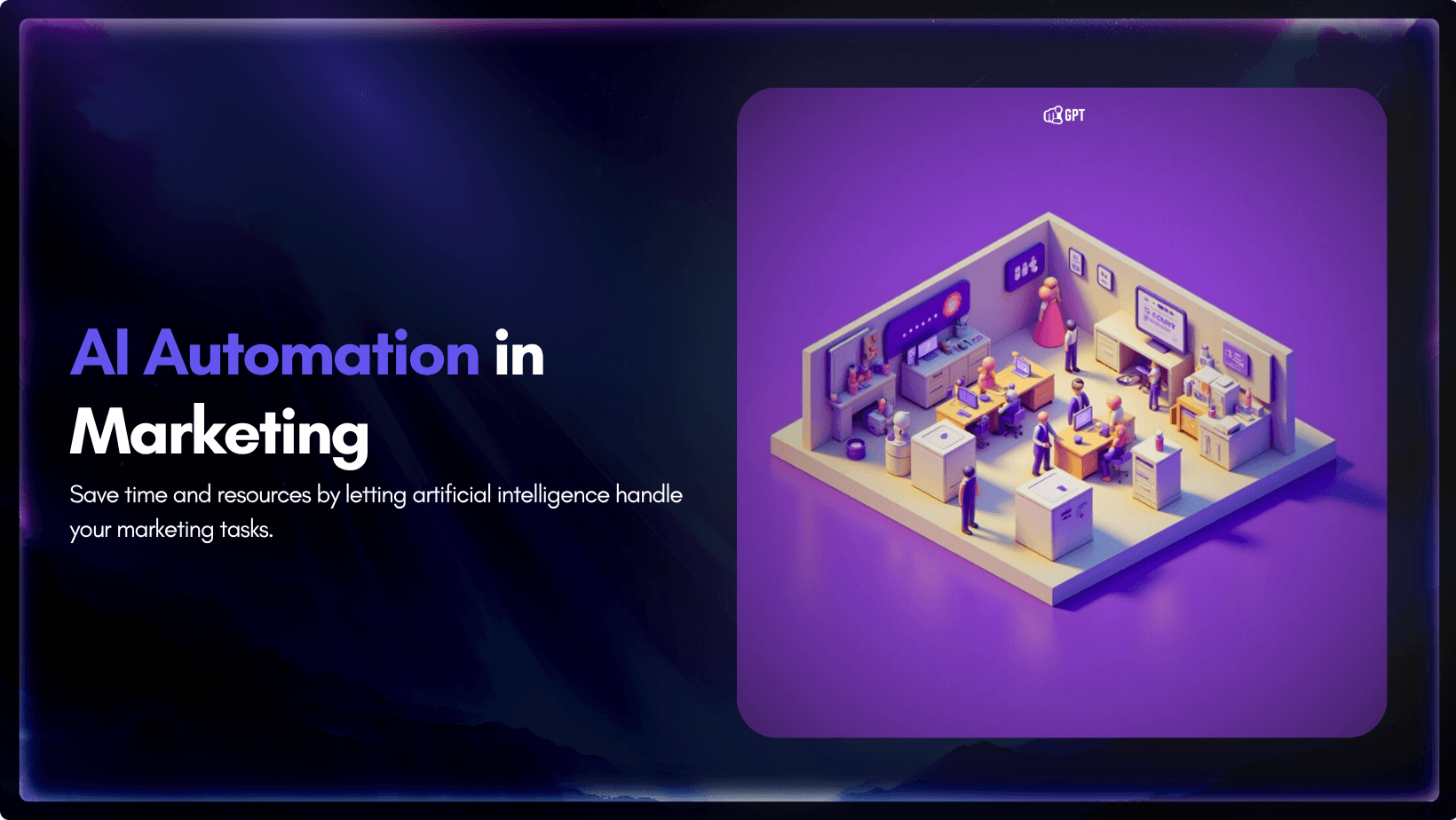
AI Automation in Marketing for Modern Businesses

